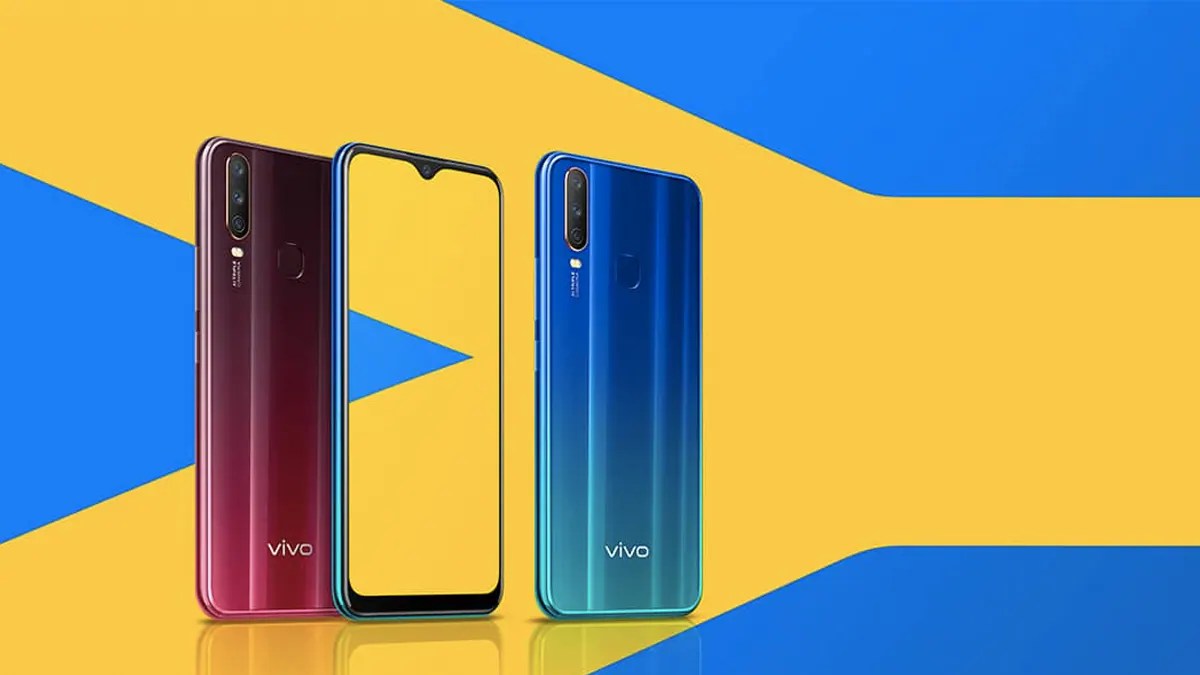Apple Original Video Launched 2019: Remember when Apple threw its hat into the streaming ring? 2019 saw the debut of Apple TV+, a bold move into a fiercely competitive market already dominated by Netflix, Hulu, and Amazon Prime. This wasn’t just another streaming service; it was Apple, leveraging its brand power and deep pockets to shake things up. But did their star-studded lineup and hefty budget translate into instant success? Let’s dive into the launch, the initial reception, and the lasting impact of Apple’s foray into original video content.
From the initial marketing blitz to the critical response to shows like “The Morning Show” and “See,” Apple’s 2019 launch was a complex mix of high expectations, strategic decisions, and the inevitable growing pains of a newcomer in a crowded field. We’ll explore the challenges Apple faced, its unique selling propositions, and how it attempted to carve out its niche in a landscape already brimming with options. Get ready for a behind-the-scenes look at the early days of Apple TV+.
Key Shows Released in 2019

Source: picryl.com
Apple TV+’s launch in 2019 was a bold move into the increasingly competitive streaming landscape. While lacking the vast library of established players, Apple aimed for quality over quantity, investing heavily in original programming with A-list talent. The success of this strategy, however, was a complex mix of critical acclaim, audience engagement, and the ever-elusive return on investment.
Critical Reception of Prominent 2019 Shows
The initial slate of Apple TV+ shows received a mixed bag of reviews. While some were lauded for their innovative storytelling and strong performances, others faced criticism for pacing or plot inconsistencies. For example, *The Morning Show*, starring Jennifer Aniston and Reese Witherspoon, generated significant buzz, praised for its timely exploration of workplace misconduct and gender dynamics in the media industry. Many critics highlighted the powerful performances and compelling narrative, although some noted a somewhat uneven pacing in the first season. Conversely, *Dickinson*, a comedic take on the life of Emily Dickinson, received generally positive reviews for its unique visual style and Hailee Steinfeld’s charismatic portrayal of the iconic poet. However, some found the anachronistic elements jarring. Finally, *See*, a post-apocalyptic drama, divided critics. While its premise and visual effects were appreciated, some felt the plot was slow-moving and the overall narrative lacked depth. Reviews in publications like The New York Times and Variety provided detailed analyses of these shows, showcasing both their strengths and weaknesses.
Audience Engagement Metrics for Select 2019 Shows
Precise viewership figures for Apple TV+ shows in 2019 remain elusive, as Apple has been relatively tight-lipped about its subscriber and engagement data. However, anecdotal evidence and social media analysis suggest that *The Morning Show* experienced a significant initial surge in viewership and online conversation, fueled by the star power of its lead actors and the topicality of its themes. Social media platforms like Twitter and Instagram saw a considerable increase in mentions related to the show, particularly during and after the release of new episodes. *Dickinson*, while receiving positive critical reviews, seemed to have generated a more niche audience, with social media engagement being less widespread compared to *The Morning Show*. This suggests that marketing and the show’s target audience played a crucial role in initial viewership.
Production Budget and Return on Investment for The Morning Show
While the exact budget for *The Morning Show* remains undisclosed, industry estimates suggest a significant investment per episode, considering the A-list cast and high production values. Given the considerable marketing push and the critical attention garnered, Apple likely viewed the initial investment as a strategic move to establish the platform’s credibility and attract subscribers. Whether this translated into a positive return on investment in the short term is debatable, as profitability in the streaming industry often requires a longer-term perspective, factoring in subscriber growth and overall platform performance. The success of *The Morning Show* likely contributed to Apple’s overall confidence in continuing to invest in high-quality original content.
Hypothetical Marketing Campaign for Dickinson: Targeting a Younger Demographic
A hypothetical marketing campaign for *Dickinson*, targeting a younger demographic (Gen Z), could leverage TikTok and Instagram heavily. Instead of focusing solely on the historical aspect, the campaign could emphasize the show’s modern sensibility, its witty dialogue, and its relatable themes of self-discovery and rebellion. Short, engaging video clips showcasing Hailee Steinfeld’s energetic performance and the show’s visually striking aesthetic could go viral. Influencer marketing, partnering with relevant creators who resonate with Gen Z audiences, would further amplify the reach. The campaign could also incorporate interactive elements, such as challenges and contests, to encourage engagement and build a strong online community around the show. This approach aims to position *Dickinson* not as a stuffy historical drama but as a fresh, funny, and relevant series for a younger generation.
Impact on the Streaming Landscape
Apple TV+’s November 2019 launch wasn’t just another streaming service entering a crowded market; it was a significant event that rippled through the industry. Backed by the immense brand recognition and resources of Apple, its arrival immediately shifted the competitive dynamics, forcing established players to reassess their strategies and prompting a wave of new entrants to consider their own positions. The impact was multifaceted, influencing everything from pricing models to content creation.
Apple TV+’s entry into the streaming wars in 2019 was a bold move, shaking up the established order. Unlike Netflix’s vast library or Disney+’s focus on family-friendly content, Apple aimed for a different approach, relying on high-quality, original programming and a surprisingly aggressive pricing strategy. This approach, while initially questioned by many, carved out a unique space for the service in a rapidly expanding market.
Apple TV+’s Unique Selling Propositions
Apple TV+ differentiated itself through a combination of factors. Firstly, its focus on original, high-budget programming, often featuring A-list talent, was a clear differentiator. While other services relied heavily on licensed content, Apple opted for a strategy of attracting top creators and offering exclusive series and films. Secondly, Apple’s reputation for quality and user experience extended to the platform itself, providing a seamless and intuitive interface. Finally, the relatively low price point—significantly cheaper than many competitors—made it an attractive option for budget-conscious consumers.
Apple TV+’s Subscription Model Compared to Competitors
In 2019, Apple TV+’s subscription model stood out for its simplicity and affordability. At a significantly lower price point than Netflix or Hulu, it offered a compelling value proposition, particularly for viewers interested in high-quality original content but wary of the escalating costs of multiple streaming subscriptions. While Netflix offered a tiered pricing structure with varying content libraries and quality levels, Apple chose a single-tier model with access to its entire catalog at a fixed, low price. This straightforward approach contrasted sharply with the more complex pricing structures adopted by other services. Disney+, launching around the same time, also offered a single-tier model but at a slightly higher price point.
Technological Features and Innovations
Apple leveraged its existing technological prowess to enhance the Apple TV+ experience. The seamless integration with other Apple devices, allowing for easy access and viewing across iPhones, iPads, Macs, and Apple TVs, was a key advantage. The service also benefited from Apple’s high standards in video quality and streaming technology, ensuring a smooth and high-definition viewing experience. Furthermore, Apple integrated advanced features like Dolby Vision and Dolby Atmos support, providing viewers with an immersive audio-visual experience comparable to the highest-quality home theater setups. These technological advantages provided a polished and user-friendly experience, setting a high benchmark for other streaming services.
The Role of Celebrity & Branding: Apple Original Video Launched 2019

Source: gadgets360cdn.com
Remember when Apple launched its original video service in 2019? It was a big deal, a serious contender in the streaming wars. The timing was interesting, considering that around the same time, phones like the OnePlus 5T were already being phased out in certain markets – check out this article on why the OnePlus 5T was no longer sold in North America.
This rapid turnover in the tech world highlights how quickly even popular devices become obsolete, a stark contrast to the long-term strategy often employed by content providers like Apple.
Apple TV+’s launch in 2019 was a calculated gamble, leveraging both its established brand power and the star wattage of A-list talent to compete in a rapidly saturating streaming market. The strategy wasn’t simply about throwing money at big names; it was a strategic move to build immediate credibility and attract a significant subscriber base from the outset. The interplay between celebrity endorsements, Apple’s brand reputation, and targeted marketing campaigns proved crucial to the platform’s early success.
Apple’s decision to secure high-profile actors and directors for its original programming played a pivotal role in attracting subscribers. The presence of established names lent an air of quality and prestige to the relatively unknown streaming service, immediately setting it apart from other newcomers. This wasn’t just about attracting viewers; it was about building trust and signaling a commitment to producing high-quality content.
A-List Actors and Directors as Subscribers’ Magnets
The casting of Jennifer Aniston and Reese Witherspoon in *The Morning Show*, for example, generated considerable buzz. These two A-list actresses, known for their individual success and strong fan bases, immediately gave the show – and by extension, Apple TV+ – significant media attention and helped draw in a substantial audience. Similarly, the involvement of Steven Spielberg with *Amazing Stories* added a layer of prestige, leveraging Spielberg’s decades-long reputation for creating compelling narratives and visually stunning productions. These high-profile collaborations acted as powerful marketing tools, surpassing traditional advertising methods.
Apple’s Brand Influence on Apple TV+ Success
Apple’s pre-existing brand reputation as a purveyor of premium, user-friendly products significantly impacted Apple TV+’s success. The association with Apple’s minimalist aesthetic, focus on quality, and seamless integration into the existing Apple ecosystem fostered a sense of trust and expectation among consumers. This established brand loyalty translated directly into a willingness to subscribe to Apple TV+, even without extensive prior knowledge of its content lineup. The ease of access through existing Apple devices further amplified this advantage.
Marketing Channels Utilized for Apple TV+ Promotion
Apple employed a multi-pronged marketing strategy in 2019, capitalizing on both its existing infrastructure and innovative digital channels. Traditional advertising methods, including television commercials featuring snippets of original programming and celebrity endorsements, were utilized. However, Apple also heavily invested in digital marketing, using targeted online advertising, social media campaigns, and strategic partnerships with influential media outlets to generate awareness and drive subscriptions. This combined approach maximized reach and impact.
Visual Representation of Apple TV+’s Initial Marketing
Imagine a clean, minimalist poster. The background is a deep, almost navy blue, evoking a sense of sophistication and calm. Centrally positioned is the Apple TV+ logo – a simple, white apple silhouette with a subtle, almost imperceptible gradient. Below the logo, the names of key shows and stars are displayed in a clean, sans-serif font, keeping the overall aesthetic consistent with Apple’s branding. The overall impression is one of understated elegance, quality, and exclusivity. The color palette is deliberately restrained, focusing on shades of white, black, and deep blue, reflecting Apple’s design philosophy. There’s a deliberate absence of clutter, conveying a sense of sophistication and high production values.
Early Challenges and Strategies
Apple TV+’s 2019 launch wasn’t a smooth ride into the streaming stratosphere. Facing established giants like Netflix and Amazon Prime Video, the newcomer had to navigate a challenging landscape to carve out its own space. The initial hurdles were significant, requiring innovative strategies and a willingness to adapt.
Apple’s primary challenge was establishing a compelling content library capable of attracting subscribers. Unlike competitors who had years of accumulated content, Apple TV+ launched with a relatively small initial slate of original programming. This lack of a deep catalog, particularly of established, popular shows, posed a significant risk to attracting a substantial user base early on. Furthermore, the price point, while competitive, needed to justify itself against free or significantly cheaper alternatives offering vast libraries of movies and shows. Building brand recognition and trust in a new streaming platform was also crucial. Consumers were already loyal to existing services, and convincing them to switch required a strong value proposition.
Content Acquisition and Production
Apple’s strategy focused on securing high-profile talent and investing heavily in original content production. They didn’t try to compete on quantity immediately; instead, they aimed for quality. This involved signing deals with A-list actors, directors, and producers, such as Oprah Winfrey, Steven Spielberg, and Jason Momoa, to create exclusive, high-budget shows. This strategy was designed to generate buzz and attract attention, hoping to build a reputation for quality over quantity. The early shows, while few in number, were marketed aggressively, highlighting the star power involved and the premium production values. The hope was that these high-profile projects would draw in subscribers, who would then be retained by the promise of more quality content in the future.
Pricing and Marketing Strategies
Apple leveraged its existing ecosystem to promote Apple TV+. The service was heavily integrated into Apple devices, making it easily accessible to existing Apple users. Bundling free trials with new device purchases also drove initial sign-ups. Their marketing campaigns focused less on price wars and more on the prestige and quality of their programming. They highlighted the creative vision behind each show and the involvement of renowned talent, positioning Apple TV+ as a premium streaming option rather than a budget-friendly alternative. This reflected Apple’s broader brand strategy, emphasizing quality and a seamless user experience over sheer volume.
Adapting to Early Feedback, Apple original video launched 2019
Early feedback indicated a need for more diverse content and a broader range of genres. While the initial slate was strong, it lacked the variety that many viewers expected from a major streaming service. Apple responded by expanding its programming slate to include more genres, such as documentaries and children’s programming. They also increased their investment in international productions to broaden their appeal beyond the US market. This demonstrated a willingness to learn from early user feedback and adapt their content strategy accordingly, a crucial aspect of building a successful streaming platform.
Long-Term Vision
Apple’s long-term vision for Apple TV+ in 2019 wasn’t just about immediate subscriber numbers; it was about building a sustainable, high-quality streaming service that would become a cornerstone of the Apple ecosystem. They were playing the long game, investing in original content that would build a loyal audience over time. Their strategy was based on the belief that high-quality programming, coupled with a seamless user experience and integration with Apple devices, would create a compelling value proposition that would attract and retain subscribers long-term. This patient approach, contrasted with the aggressive growth strategies of some competitors, reflected Apple’s characteristic focus on creating a premium brand experience.
Final Conclusion

Source: picryl.com
Apple’s 2019 entry into the streaming wars with Apple TV+ was a high-stakes gamble that yielded mixed results. While the service didn’t immediately dethrone established giants, its strategic use of celebrity power, Apple’s inherent brand recognition, and a curated selection of quality content laid a foundation for future growth. The initial challenges highlighted the difficulties of breaking into a saturated market, but Apple’s long-term vision and willingness to adapt suggest a continuing evolution in its streaming strategy. The story of Apple TV+’s 2019 launch is a fascinating case study in brand power, content strategy, and the ever-shifting landscape of the streaming industry.